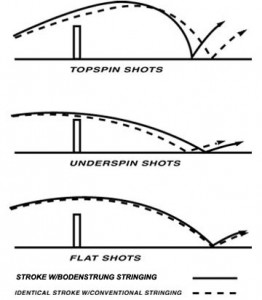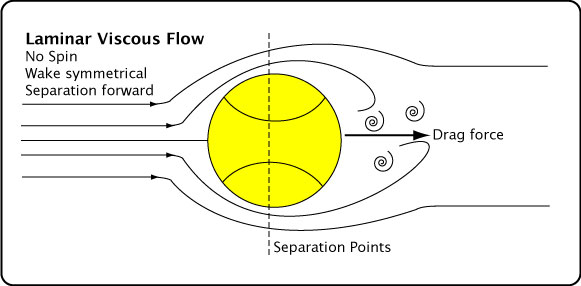Air is not a
friction less substance so when a
ball flows through this fluid
forces of friction act upon it.

https://media.licdn.com/mpr/mpr/p/2/005/089/036/344d07d.jpg
|
Looking at the
image above (and ignoring the
dotted line) we can see the
relative trajectories given to a
tennis ball when hit with the
three spins of tennis. The reason
that a tennis ball changes its
trajectory when it is spinning and
moving through the air is because
of the Magnus effect.

http://twu.tennis-warehouse.com/images/aerodynamics/spinflow.jpg
|
As we see from
this image topspin shots are
pushed down by the Lift Force.
What we don't see is that air
resistance is creating this force
from a high pressure zone above
the ball and a low pressure zone
below the ball. Slice or Backspin
is the opposite direction of
rotation so the lift force is
underneath the ball. This means on
a slice shot the high pressure
zone is below the ball and the low
pressure zone is above the ball.

http://twu.tennis-warehouse.com/images/aerodynamics/laminarviscousflow.jpg
|
This figure shows
a flat shot because it is showing
no spin. We then can assume that
the drag force is being equally
distributed on both sides of the
ball and the force that is pulling
the ball to the ground is gravity.